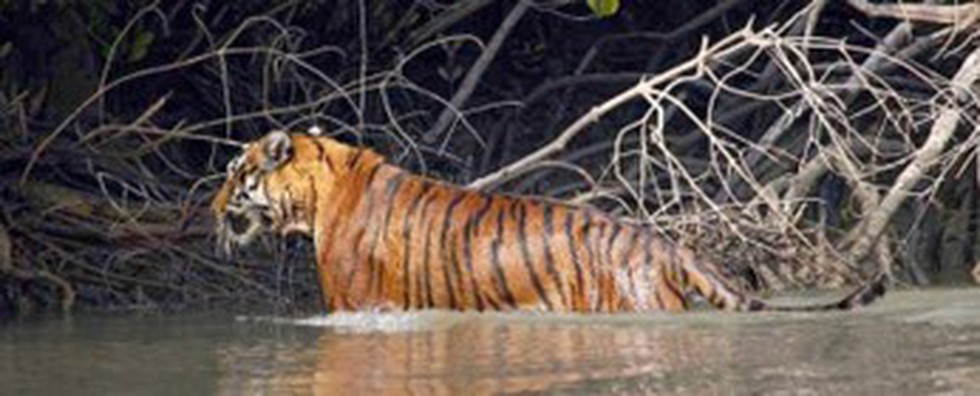What are Deepfakes?
The Union Information Technology Minister recently said the government will form regulations to control the spread of deepfakes on social media platforms, terming them a “new threat to democracy."

About Deepfakes:
- Deepfakes are a compilation of artificial images and audio put together with machine-learning algorithms to spread misinformation and replace a real person’s appearance, voice, or both with similar artificial likenesses or voices.
- The term "deepfake" combines the deep learning concept with something fake.
- It can create people who do not exist, and it can fake real people saying and doing things they did not say or do.
- Background: The origin of the word “deepfake” can be traced back to 2017, when a Reddit user with the username "deepfakes", posted explicit videos of celebrities.
- Working:
- They are created by machine learning models, which use neural networks to manipulate images and videos.
- To make a deepfake video of someone, a creator would first train a neural network on many hours of real video footage of the person to give it a realistic “understanding" of what he or she looks like from many angles and under different lighting.
- Then they'd combine the trained network with computer-graphics techniques to superimpose a copy of the person onto a different actor.
- Deepfake technology is now being used for nefarious purposes like scams and hoaxes, celebrity pornography, election manipulation, social engineering, automated disinformation attacks, identity theft, and financial fraud.
- Deep fakes differ from other forms of false information by being very difficult to identify as false.
What is a Radio Galaxy?
Astronomers recently reported the discovery of 63 new giant radio galaxies.

About Radio Galaxy:
- Radio Galaxies, also known as radio-luminous galaxies or radio-loud galaxies, are a particular type of active galaxy that emits more light at radio wavelengths than at visible wavelengths.
- These happen through the interaction between charged particles and strong magnetic fields related to supermassive black holes at the galaxies’ centre.
- Radio galaxies are driven by non-thermal emissions.
- They are much bigger than most of the other galaxies in the universe.
- The first radio galaxy to be discovered, and still the brightest, is called Cygnus A.
- There are two broad classes of radio galaxies:
- Core-halo radio galaxies:
- They exhibit radio emission from a region concentrated around the nucleus of the galaxy.
- The region of radio emission is comparable in size to the optically visible galaxy.
- Lobed radio galaxies:
- They display great lobes of radio emission extending, in some cases, for millions of light years beyond the optical part of the galaxy.
- Some radio galaxies have a single lobe, but more often, the lobes are double, arrayed on both sides of the optical galaxy.
- Core-halo radio galaxies:
Sundarbans Tiger Reserve (STR)
The annual tiger census in West Bengal’s Sundarbans is scheduled to commence soon.

About Sundarbans Tiger Reserve (STR):
- Location:
- STR is situated in the coastal districts of West Bengal, i.e., South 24-Parganas and part of North 24-Parganas.
- It lies at the southernmost extremity of the lower Gangetic delta, bordering the Bay of Bengal.
- It is a part of the famous "Sundarbans," the largest delta in the world, formed by the convergence of two Himalayan rivers, the Ganga and the Brahmaputra, both of which flow into the Bay of Bengal.
- It is not only a Tiger Reserve but also a National Park and a Biosphere Reserve.
- Borders:
- It is bound to the east by the international boundary with Bangladesh, formed by the rivers Harinbhanga, Raimangal, and Kalindi.
- On the south lies the Bay of Bengal.
- The western border is formed by the river Matla, which acts as a common boundary with the territorial Forest Division of South 24- Parganas.
- Towards the north-west, the area is bound by the rivers Bidya and Gomdi.
- It can be described as a maze of estuaries, river channels, and creeks encompassing a number of islands of various shapes and sizes.
- It is the only mangrove forest throughout the world (besides Bangladesh) to harbour a significant tiger population.
- Flora: These comprise of true mangroves or major elements, minor elements of mangroves or/and mangrove associates, shrubs, non-halophytic non-mangrove associates, halophytic herbs, shrubs, weeds, epiphytes, and parasitic plants.
- Fauna: It is home to a large number of endangered and globally threatened species like the tiger, fishing cat, estuarine crocodile, Gangetic dolphin, Irrawaddy Dolphin, king cobra, water monitor lizard, and other species.


























































































































































.png)
.png)
.png)
.png)
.png)


.png)
.png)
.png)





.png)
.png)






.png)
.png)
.png)
.png)
.png)
.png)
.png)
.png)
.png)

.png)







.png)
.png)


.png)
.png)
.png)


.png)

.png)
.png)





.jpg)

.png)
.png)


.png)

.png)
.png)
.png)

.jpg)

.jpg)


.png)

.png)
.png)
.png)
.png)
.png)
.png)
.png)
.png)
.png)
.png)




.png)

.png)





.png)
.png)
.png)
.png)
.png)
.png)
.png)
.png)
.png)
.png)
.jpg)
.jpg)

.png)
.png)
.png)
.png)
.png)
.png)
.png)
.png)
.png)
.png)
.png)
.png)
.png)
.png)
.png)
.png)
.png)
.png)
.png)
.png)
.png)
.png)



.png)
.png)

.jpg)
.jpg)


.jpg)
.jpg)
.jpg)
.jpg)
.jpg)

.jpg)








.jpg)
.jpg)
.jpg)
.jpg)
.jpg)

















.jpg)
.jpg)







.jpg)


















.jpg)
.jpg)






























































































.jpg)
.jpg)


























.jpg)

.jpg)










.jpg)








.jpg)




.jpg)










.jpg)


















.jpg)












































.jpg)














.jpg)
.jpg)
.jpg)





.jpg)

.jpg)
.jpg)





































































.jpg)


































.jpg)
.jpg)
















































.jpg)












.jpg)


.jpg)




.jpg)
.jpg)
.jpg)

.jpg)
.jpg)
.jpg)
.jpg)

.jpg)
.jpg)
.jpg)

.jpg)
.jpg)
.jpg)
.jpg)
.jpg)
.jpg)
.jpg)
.jpg)

.jpg)


.jpg)
.jpg)
.jpg)
.jpg)
.jpg)
.jpg)
.jpg)
.jpg)
.jpg)
.jpg)











.jpg)
.jpg)





.jpg)
.jpg)
.jpg)
























.jpg)
























.jpg)









.jpg)
.jpg)







.jpg)
.jpg)









































.jpg)
.jpg)
.jpg)
.jpg)
.jpg)

.jpg)
.jpg)
.jpg)
.jpg)
.jpg)


.jpg)
.jpg)
.jpg)
.jpg)
.jpg)

.jpg)
.jpg)
.jpg)
.jpg)
.jpg)
.jpg)
.jpg)
.jpg)
.jpg)
.jpg)
.png)

.png)
.png)

.png)
.png)
.png)
.png)


.jpg)
.jpg)

.jpg)
.jpg)
.jpg)

.png)
.png)
.png)
.png)
.png)
.png)
.png)

.png)
.png)
.png)
.png)
.png)
.png)
.png)
.png)
.png)
.png)





































































-min.png)



.png)




.png)








































